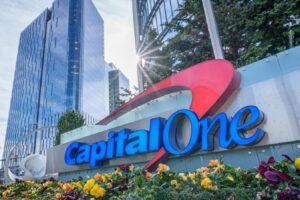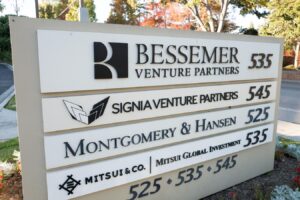Nate Williams is Managing Partner of Union Labs VC, a seasoned investor and operator focused on the convergence of SaaS & DeepTech.
In early-stage venture capital and startup formation—especially in deep tech and physical AI—the hardest problems cannot be solved in isolation.
Unlike traditional software-as-a-service (SaaS) or consumer startups, deep tech ventures live at the intersection of hard sciences, engineering and bespoke go-to-market cycles. They require trust-rich collaboration across industries, disciplines and stages of readiness. In these environments, “community” is not just a nice-to-have—it’s a strategic asset. In fact, it’s often an unlock behind accelerating disruptive innovation.
I call this need community capital: The network of relationships, insights and support systems that accelerate the path from lab to launch. This is not just a buzzword for me; in fact, community-led engagements have contributed to sourcing more than a quarter of our investments. It’s part serendipity, part intelligent design—and it’s becoming indispensable in deep tech investing.
Deep Tech Demands It
Let’s be honest: Deep tech is hard (and it should be). You’re not just building an e-commerce app—you’re doing things like developing autonomous systems for industrial design, reimagining energy infrastructure or applying AI to physical-world security. These types of startups, all represented in our current investment portfolio, face scientific risks, regulatory complexities, hardware integrations and sometimes even groundbreaking new sales strategies. There’s no “move fast and break things” here.
That’s why Marc Andreessen recently remarked that venture capital might be one of the last human jobs left—because success in our world is based on “taste, psychology, and chaos tolerance.”
In deep tech, that chaos is real—and it’s why community matters so much. There are simply too many “unknown unknowns” for any founder or investor to go it alone.
Community Over Network
It bears repeating: There’s a big difference between collecting contacts and cultivating community.
Naval Ravikant’s quote comes to mind: “Play long-term games with long-term people.” While he often contrasts networking with creating value, deep tech benefits from both: deep expertise and heterogeneous networks where ideas, capital and talent intersect.
In my operating days, building smart access hardware and security software required networks across industrial design, manufacturing, software integration and multichannel go-to-market—business-to-consumer (B2C) and business-to-business (B2B) alike.
Communities of practice weren’t ancillary; they were critical infrastructure. And the best communities weren’t transactional; they were aligned. They create environments where information flows freely, pattern recognition is shared and people are in service of each other’s success.
A Playbook For Building Community Capital
Making community a functional operating principle requires intentional design. Business leaders can implement models like:
Peer-Led Insight Exchanges
I help lead a monthly, invite-only exchange that brings together like-minded deep tech investors to share technical diligence, deal flow and sector insights asynchronously. Participants include funds with complementary expertise across robotics, semiconductors and AI. The goal isn’t competition—it’s clarity.
Others can replicate this model by:
• Engaging six to 10 leaders from a variety of firms.
• Setting clear collaboration norms and participation expectations.
• Using shared tools to facilitate asynchronous momentum.
• Embracing sector specialties and diversity of opinions to lift collective understanding.
Trust-First Field Gatherings
Rather than pitch decks and panels, we co-host quarterly cycling events with our partner firms. Founders and funders ride together, building trust in a relaxed, agenda-free setting here in San Francisco. Syndicates have formed, teams have met and ideas have taken root from these informal settings.
Business leaders can use similar strategies by:
• Hosting low-pressure community events outside traditional spaces.
• Prioritizing authenticity over performance.
• Creating time and space for serendipitous connection.
Founder-Curated Mixers
Happy hours and taco lunches blend operators, corporate innovators and aspiring founders in a casual, high-signal setting. In fact, it was one such evening that sparked a conversation that led to our investment in a climate-tech startup.
Others can emulate this by:
• Intentionally inviting diverse participants, including “founders in hiding”: those pre-idea executives considering developing a new startup.
• Using thematic prompts such as “dispatches from the future” to surface new ideas.
• Structuring small group conversations to encourage authentic connection.
Sector-Specific Convener Series
We also regularly gather early-stage investors into larger but off-the-record events to share go-to-market benchmarks, technical frameworks and conviction-building strategies. These sessions have provided valuable insights for emerging managers and fund limited partners alike.
To build something similar I recommend you:
• Curate for diversity of perspective, even among firms that may be considered competitors.
• Normalize data benchmarking to drive sector advancement.
• Focus on the “so what’s” of current trends rather than just high-level statistics.
Each of these formats is built on a simple idea: Relationships precede results.
The ROI Of Community Capital
What’s the return on investing (ROI) in an active, engaged and aligned community? It’s not always visible on a spreadsheet, but it’s very real:
• Faster diligence through warm, informed signals
• Shared technical insight on hard problems
• Early visibility into thematic shifts at the edge of innovation
• Access to under-networked but extraordinary founders
• Talent introductions before executive recruiters are needed
Most importantly: Community creates trust—and trust compresses time.
For founders working on three- to five-year commercialization cycles (or more), the time to first hire, first customer or next round can be existential. For investors, communities that surface hidden gems—or pressure-test emerging theses—can be a source of quiet alpha. But beware: Great communities foster debate, dissent and intellectual diversity. Without those, groupthink is a real risk.
A New Metric For Early-Stage Venture
The future of deep tech won’t just be built in labs—it will be built in the communities that manifest innovation. In SaaS, we track things like customer acquisition cost, lifetime value, the magic ratio (revenue efficiency), net revenue retention (NRR), burn multiple and churn. In deep tech, maybe it’s time to track community capital efficiency—how many strategic outcomes come not from hustle alone, but from these cultivated ecosystems.
In the next part of this series, I’ll go deeper into the structures, roles and rituals that bring these communities to life. Whether you’re a VC, a Fortune 500 executive or a founder in the trenches, there’s a replicable model for using community as a competitive edge.
Forbes Business Council is the foremost growth and networking organization for business owners and leaders. Do I qualify?
Read the full article here











